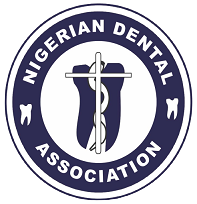Pattern of Maxillofacial Trauma in the Nigerian Population
DOI:
https://doi.org/10.61172/ndj.v27i1.93Keywords:
Maxillofacial, Trauma, Nigerian, PopulationAbstract
Introduction: The pattern of trauma to the maxillofacial region differs in various parts of the world. Studies have shown that not only does it differ from one continent to the other, it differs from one country to another within the same continent and from one zone to another within the same country. These have been ascribed to the prevailing socioeconomic, cultural and environmental factors in the study area. It is important that patterns of maxillofacial injuries should be continuously evaluated so that efforts should be put in place to reduce the incidence. The aim of the present study is therefore to describe the patterns of maxillofacial injuries in the Nigerian literature.
Methods: The MEDLINE was used to conduct a computerized literature search using for publications on maxillofacial trauma in Nigeria. For this search, the medical subject headings on "maxillofacial fractures" or "mandible fractures" or "middle-third fractures" or "facial fractures" or "zygoma fractures" were combined with "Nigeria". Also, the publications cited in these articles to look for additional important articles but were not found on MEDLINE were searched for.
Results: Most of the studies were retrospective while the commonest geopolitical zone where studies were done was the South West region. The commonest cause of maxillofacial injuries was road traffic accident while the commonest age group was the 21-30 years.
Conclusion: Road traffic accident is the commonest cause of maxillofacial injuries. It is therefore recommended that the appropriate authorities should enforce seat belt and helmet laws. The government should provide street lights, good roads, pedestrian bridges and traffic lights to reduce vehicular/vehicular and human/vehicular/human collisions.
Downloads
Downloads
Published
Issue
Section
License
Copyright (c) 2019 B. Badmos, F. Kolawole, A. Omo Lawal, I. Oni, O. Oso, A. Salawudeen, O. Talabi

This work is licensed under a Creative Commons Attribution 4.0 International License.
Open Access Statement
- We became fully Open Access since January 2023.
- Our new and archived materials are available free of charge on open basis and under a Creative Commons license as stated below.
Copyright statement
Copyright © 1999 The authors. This work, Nigerian Dental Journal by Nigerian Dental Association is licensed under Creative Commons Attribution 4.0 International License.

